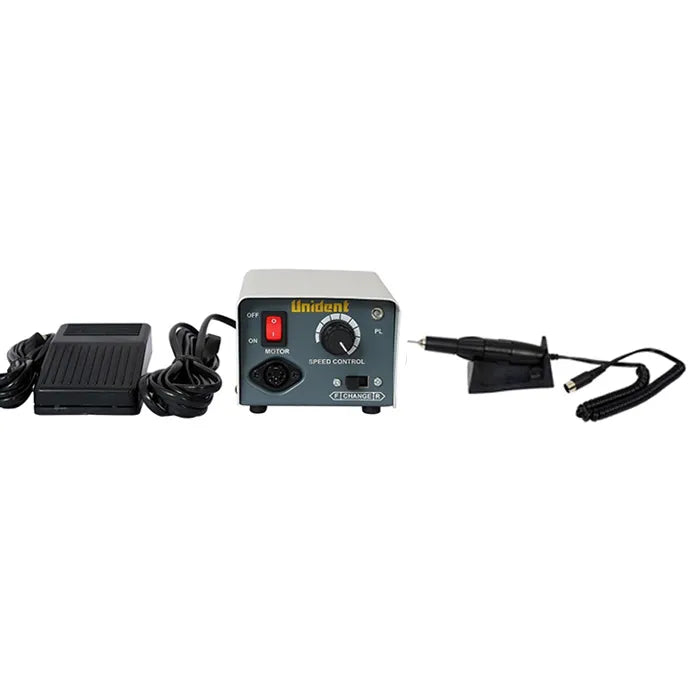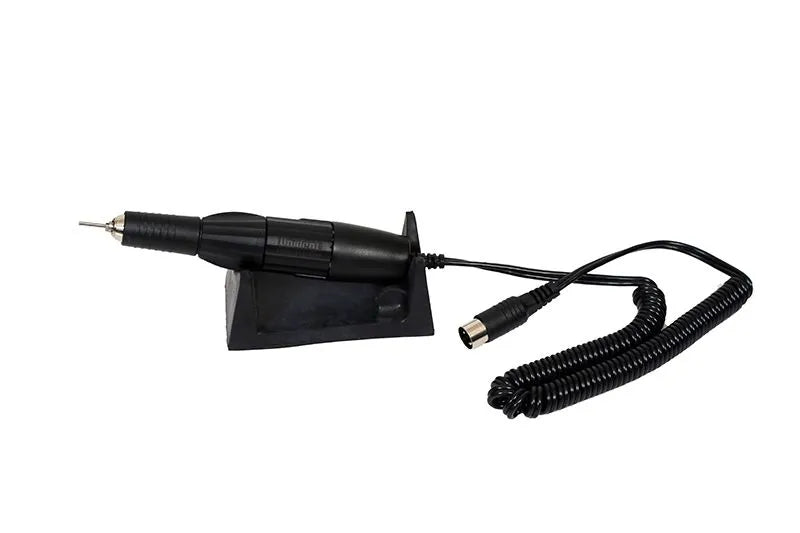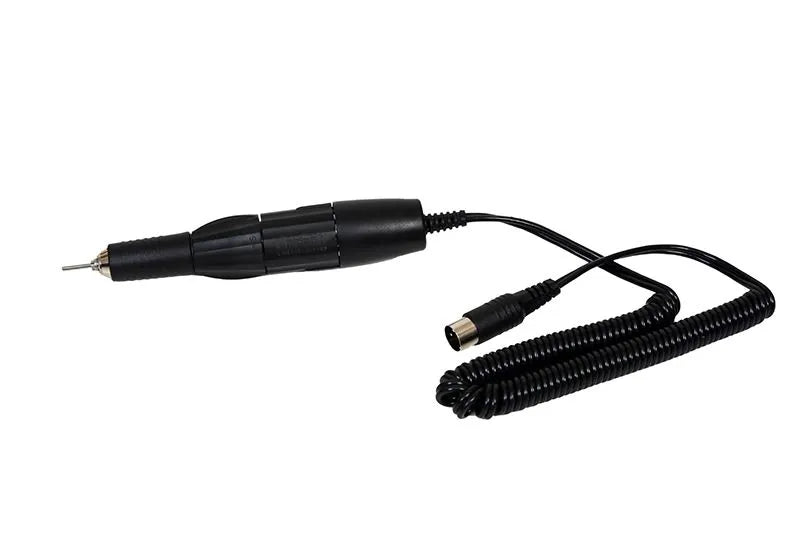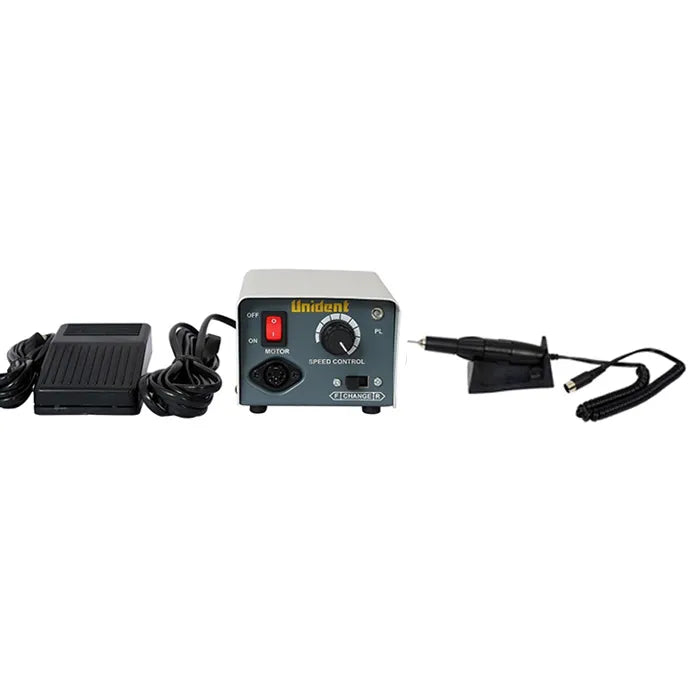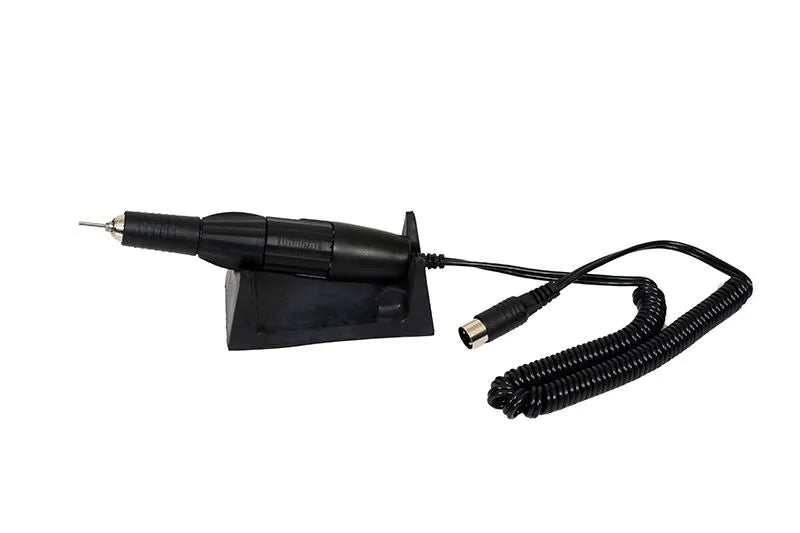Unident
Unident Lab Micromotor
Unident Lab Micromotor
Couldn't load pickup availability
Features
Features
- Extra Torque
- Forward & Reverse
- Low Heat Generation
- Suitable for Long Use
- No Noise & Vibrations
- Hand & Foot Operation
- Speed upto 35,000 RPM
- Extra Torque
- Forward & Reverse
- Low Heat Generation
- Suitable for Long Use
Description
Description
Unident Micromotor with Control Box used in dental laboratory for trimming & cutting of partial/complete dentures It is typically connected to a control box, which serves as the central unit for regulating and adjusting the motor's speed, torque, and other operating parameters. The control box features user-friendly controls, including buttons or dials, allowing dental technicians to easily manipulate the micromotor's settings according to their specific requirements. . The motor's high rotational speed, often ranging from a few hundred to several thousand revolutions per minute, ensures swift material removal and precise shaping, contributing to enhanced productivity in the dental lab.
Specification
Specification
- Extra Torque
- Forward & Reverse
- Low Heat Generation
- Suitable For Long Use
- Low Noise & Vibration
- Speed upto 35,000 RPM
Packaging
Packaging
Direction to use
Direction to use
- Setup: Ensure that the micromotor and control box are securely connected using the provided cables. Place the control box on a stable surface within easy reach.
- Power On: Connect the control box to a power source and turn it on using the power switch or button. Verify that the control box display or indicator lights are active.
- Speed Adjustment: Use the speed control function on the control box to set the desired rotational speed for the micromotor. Start with a lower speed setting and gradually increase it as needed during the procedure.
- Bur Installation: Select an appropriate bur or tool for the specific task at hand. Most micromotors use a quick-release mechanism for bur installation.
- Grip and Position: Hold the micromotor with a firm yet comfortable grip, ensuring your hand is positioned away from the rotating bur.
- Operation: Gently activate the micromotor using the designated control button or switch on the control box. Apply light pressure and guide the rotating bur or tool to the dental material with precision.
- Speed Adjustment: Adjust the rotational speed as necessary during the procedure to achieve optimal cutting, grinding, or polishing results. Lower speeds are typically suitable for delicate materials or fine adjustments, while higher speeds are useful for rapid material removal.
- Safety Measures: Be aware of any safety features incorporated in the micromotor and control box, such as overload protection or automatic shut-off. If the motor becomes excessively hot or encounters an obstruction, allow it to cool down or address the issue before continuing.
Additional info
Additional info
Warranty
Warranty
Product Related Questions
Product Related Questions
Question What is a lab micromotor with a control box?
Answer: Lab micromotor with a control box is a precision instrument used in dental laboratories for cutting, grinding, polishing, and shaping dental materials. The micromotor is a handheld device that houses an electric motor, while the control box regulates its speed, torque, and other operating parameters.
Question What are the advantages of using a powerful lab micromotor?
Answer: Powerful lab micromotor offers several advantages, including high rotational speed for efficient material removal, versatility in accommodating different tools, precise control for shaping and polishing, and safety features to protect both the operator and the materials being worked on.
Share
